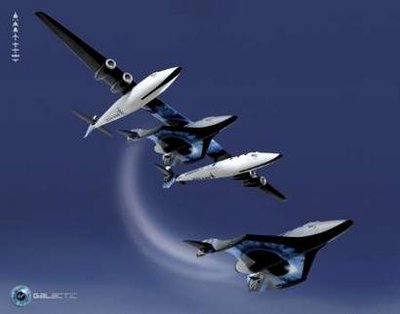Virgin Galactic Suffers a Major Accident with SpaceShip Two
One of the most interesting developments in space flight has been the entry of private companies into the game. There are several different companies which have developed their own space craft and are pursuing commercial applications of space flight. Two private companies were recently awarded a contract by NASA to help ferry astronauts and supplies to the International Space Station. Other companies are working toward orbital manufacture, orbiting solar power satellites and asteroid mining. One company, Virgin Galactic, is working on making low orbit flight available for tourists.
Virgin Galactic (VG) is a British company that is a member of the Virgin group of companies headed by flamboyant entrepreneur Richard Branson. VG is working on the develop commercial spacecraft and provide suborbital spaceflights to space tourists, suborbital launches for space science missions, and orbital launches of small satellites, as well as an orbital launch vehicle."
SpaceShip Two is the VG experimental spacecraft being used for testing and development. SST is carried aloft by carrier aircraft known as White Knight Two. When WKT reaches maximum altitude, SST is released to continue into space. SST was completed at the end of 2009 when Branson claimed that suborbital flights for tourists would begin in 2011. In 2011, Branson announced that that he hoped that tourist flights could commence in 2013.
By 2012, SST had completed fifteen test flights and sixteen glide tests. In mid-2013, SST finally took a rocket powered test flight with a sixteen second burn. The SST has been able to reach a speed of nine hundred miles per hour with an engine burn of twenty seconds. The maximium altitude achieved by SST has been thirteen miles. However, the SST will have to be able to achieve a speed of over two thousand miles per hour and reach an altitude of over sixty two miles to lift six passengers into space
In 2014, the SST successfully made its third rocket powered flight and tested its Reaction Control System. An announcement was made by a company spokesman to the effect that VG would be able to begin commercial operations by the end of 2014. The rubber-based solid fuel that they had been testing had not worked out and they were switching to a plastic-based solid fuel. They continue work on SST with critics saying that they are trying to do too much too fast.
In October of 2014, a SST test flight took place to test the new plastic-based fuel. The test flight ended in tragedy when SST broke apart in mid-air raining debris down on the Mojave desert shortly after it had separated from WKT. The test pilot died and the co-pilot was seriously injured. A number of different possible reasons for the accident were investigated and it was tentatively concluded that the air braking system deployed too early and functioned improperly. This resulted in vibrations that built up and tore the ship apart.
The media has been full of pronouncements about how this is a serious setback for VG and the whole commercial space flight industry. VG denies that it is a serious setback and is firmly committed to continuing work despite the accident. Time will tell whether this has seriously injured commercial spaceflight but the accident is a valuable reminder that this is a new dangerous new frontier.
Artist's concept of SpaceShip Two detaching from White Knight Two:
